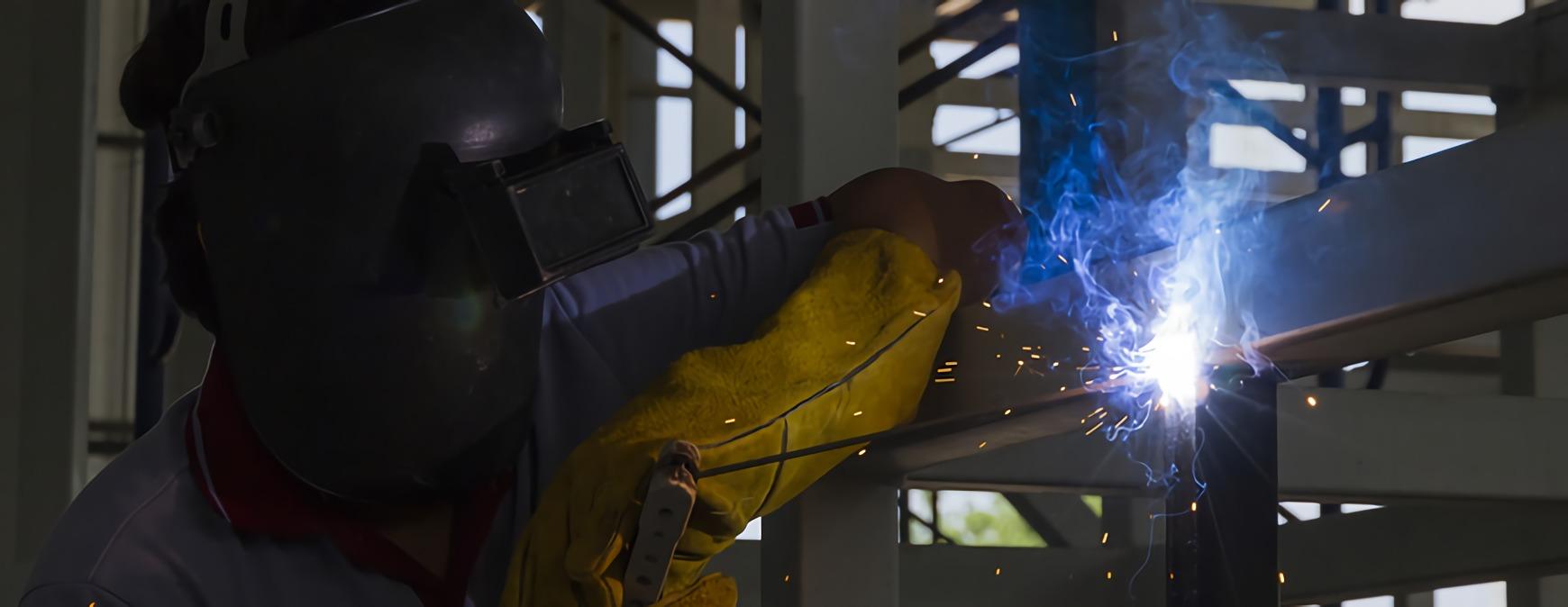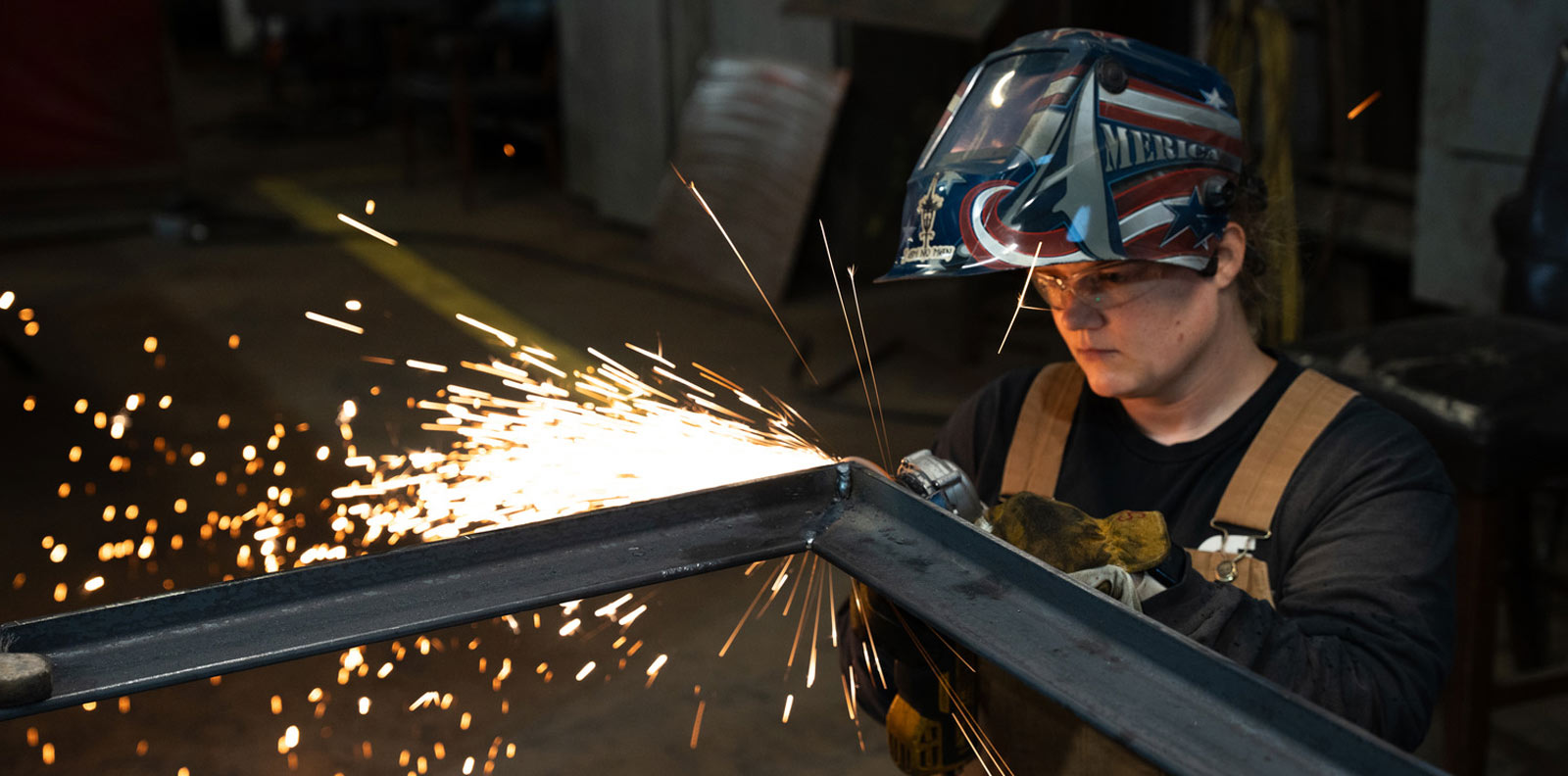RSI is a Great Training Option for Everyone
Learn more about how we can prepare you to advance your career.
Structural welders play an important role in the construction of roads, bridges, buildings, and other important infrastructure. 1 Their work is challenging but fulfilling: they climb great heights to ply their trade and shape cityscapes. Learn more about the field of structural welding in this article.
Structural Welder Definition
A structural welder is an ironworker. There are two main types of ironworkers: reinforcing iron and rebar workers (47-2171) and structural iron and steel workers (47-2221). Reinforcing iron and rebar workers are also known as “rod busters” because they install the steel rods of rebar that reinforce and strengthen large structures, such as skyscrapers and highways. Structural iron and steel workers are sometimes called “erectors” because they erect the steel frames of buildings and brides. 2

Structural Welder Job Description
While the construction industry employs most ironworkers, the number of jobs, work environments, and specific tasks of reinforcing iron and rebar workers and structural iron and steel workers are different.
Reinforcing Iron and Rebar Workers
In 2014, there were 18,700 workers employed as reinforcing iron and rebar workers. Sixty-six percent worked for contractors that handled the construction of the structure, foundation, and exterior of buildings. The other twelve percent worked in the nonresidential construction sector.
Get Started on the Path to a New Career
Fill out our form to learn how we can help you change your life.
The primary responsibility of rod busters is to install the rebar, cables, or welded wire reinforcing (WWR) that supports concrete in buildings. On a typical day, they carry, cut, bend, and weld rebar. It’s important that they keep a quick pace so that projects are completed on time.
Structural Iron and Steel Workers
There were 61,400 occupied structural iron and steel jobs in 2014. Structure, foundation, and building exterior contractors employed forty-five percent and nonresidential building construction companies employed the other twenty-three percent.
Not only do structural iron and steel workers build steel frames but they also fabricate the derricks and cranes necessary to convey equipment and materials around work sites. They use cranes to hoist columns, beams, and girders into place and then connect them with driftpins and spud wrenches. 3 4 Structural iron and steel workers secure aligned structural steel parts with bolts so they can then be permanently fused through welding or with bolts or rivets. 5
Structural Welder Skills
Both reinforcing iron and rebar workers and structural iron and steel workers manipulate metal on construction sites high in the sky, so they share a similar skillset. For starters, neither could do their job if they were afraid of heights.
Balance and Coordination
Navigating the narrow beams of building skeletons requires balance and coordination. Collaborating with other workers to move and shape large pieces of metal, as well as fasten and weld rebar and sheets of steel, takes hand-eye coordination and manual dexterity. In some cases, it’s necessary to sit, stand, or lie down while working, so multi-limb coordination is also important.
Operation, Control, and Monitoring
These workers must be able to operate machines, such as cranes, hoists, and other lifting equipment. They must know how to interpret the information on the gauges and dials of equipment to ensure it is working correctly.
Physical Strength and Stamina
Lifting, pulling, pushing, and carrying rebar and sheets of metal for long stretches of time requires physical strength and stamina.
Depth Perception and Near Vision
Directing crane operators to bundles of rebar, beams, and other large, heavy building components takes a good perception of distance between objects. Aligning and fusing structures correctly requires excellent near vision.
Blueprint Reading
Workers must understand how to read and follow blueprints, instructions, and sketches. 6 7
Structural Welder Qualifications
A high school diploma or GED is necessary to become a structural welder. Taking welding classes and courses in blueprint reading, rigging, signaling, construction, and safety at a trade school can be helpful for individuals entering the field. Obtaining welding certifications, as well as those in rigging and crane signaling, can also increase career opportunities. 8
The Future of Structural Welding
Job growth for ironworkers is set to be faster than average through 2024. Ironworkers will experience a nine percent increase in positions. Reinforcing iron and rebar workers will enjoy twenty-three percent job growth and the number of positions for structural iron and steel workers will expand by four percent. If you are interesting in having a hand in shaping the skyline of your city and town, there will likely be job opportunities for structural welders in the coming years. 9
Additional Sources
1 – https://www.bls.gov/ooh/construction-and-extraction/structural-iron-and-steel-workers.htm#tab-1
2 – https://www.bls.gov/ooh/construction-and-extraction/structural-iron-and-steel-workers.htm#tab-2
3 – https://www.bls.gov/ooh/construction-and-extraction/structural-iron-and-steel-workers.htm#tab-2
4 – https://www.bls.gov/ooh/construction-and-extraction/structural-iron-and-steel-workers.htm#tab-3
5 – https://www.onetonline.org/link/summary/47-2221.00
6 – https://www.bls.gov/ooh/construction-and-extraction/structural-iron-and-steel-workers.htm#tab-2
7 – https://www.onetonline.org/link/summary/47-2221.00
8 – https://www.bls.gov/ooh/construction-and-extraction/structural-iron-and-steel-workers.htm#tab-4
9 – https://www.bls.gov/ooh/construction-and-extraction/structural-iron-and-steel-workers.htm#tab-6
This blog has been labeled as archived as it may no longer contain the most up-to-date data. For a list of all current blog posts, please visit our blog homepage at https://www.rsi.edu/blog/




